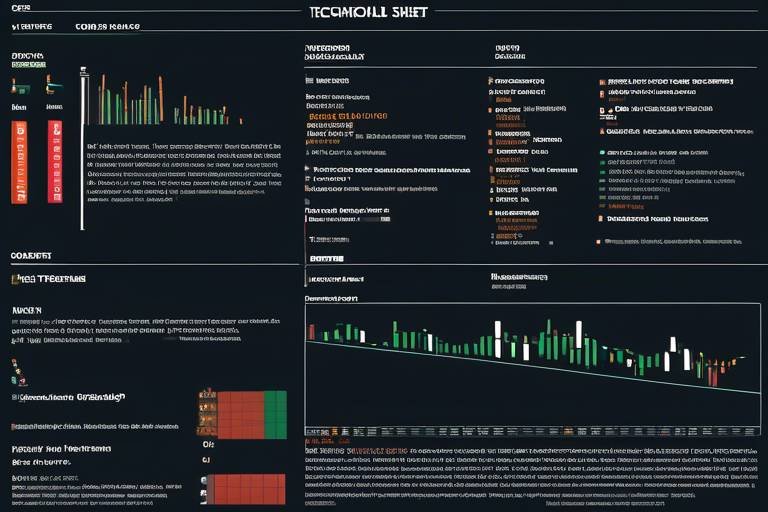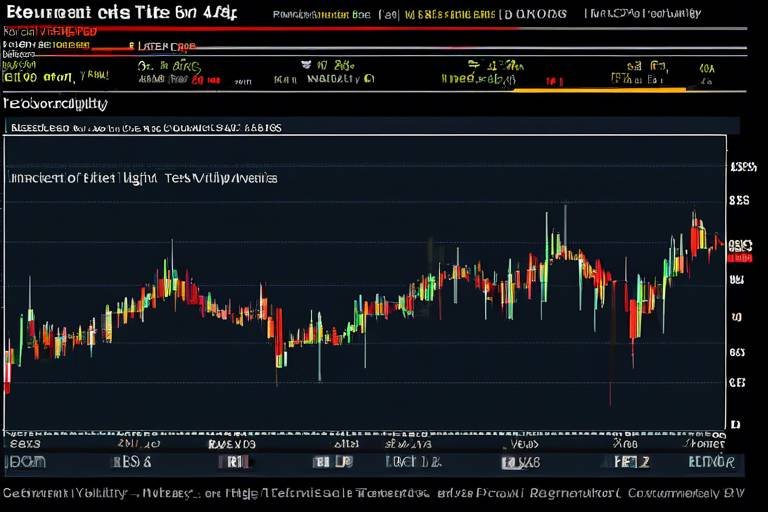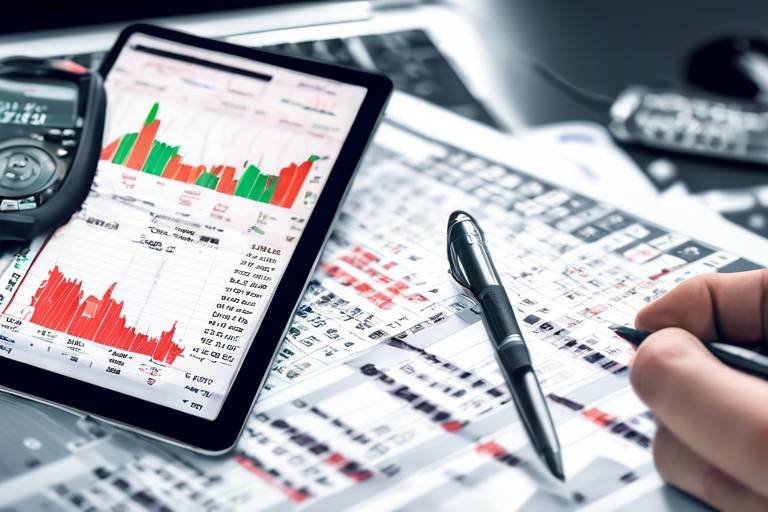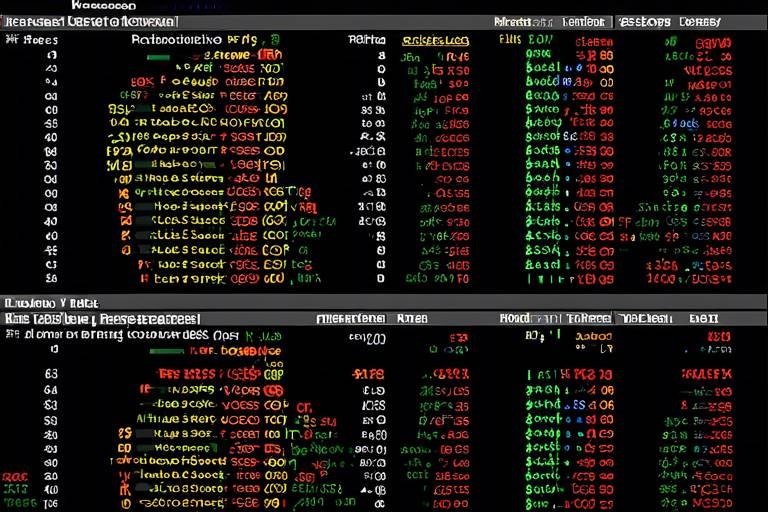How to Create a Technical Analysis Cheat Sheet
Creating a technical analysis cheat sheet can be a game-changer for traders looking to enhance their strategies and make informed decisions. A well-structured cheat sheet serves as a quick reference guide, allowing you to grasp essential concepts and indicators without having to sift through extensive materials during trading hours. Imagine having all crucial information at your fingertips, ready to guide you through the whirlwind of market fluctuations! This article will walk you through the process of crafting an effective cheat sheet, covering everything from the essential components to design tips that ensure clarity and usability.
At its core, technical analysis is the study of past market data, primarily price and volume, to forecast future price movements. It's like having a crystal ball that helps traders gauge the market's pulse. Why is this important, you ask? Well, understanding market trends and price movements enables traders to make informed decisions, reducing the risks associated with trading. By analyzing charts and indicators, traders can identify potential entry and exit points, making their trading strategies more robust. With this foundation, let’s dive into the key elements that will make up your cheat sheet.
Your cheat sheet should be a treasure trove of essential components that allow for quick reference. Here are some key elements you should consider including:
- Technical Indicators: These are the backbone of your analysis, providing insights into market behavior.
- Chart Patterns: Recognizing patterns can help you anticipate future price movements.
- Trading Signals: These signals can guide your buy or sell decisions.
By incorporating these components, you’re setting yourself up for a more effective trading experience. Let’s take a closer look at some common technical indicators that you should definitely include in your cheat sheet.
Among the plethora of indicators available, a few stand out due to their popularity and effectiveness. Let’s explore some of these indicators:
| Indicator | Function | Usage |
|---|---|---|
| Moving Averages | Smooth out price data to identify trends over time. | Used to determine support and resistance levels. |
| Relative Strength Index (RSI) | Measures the speed and change of price movements. | Indicates overbought or oversold conditions. |
| Moving Average Convergence Divergence (MACD) | Shows the relationship between two moving averages. | Helps identify potential buy and sell signals. |
Each of these indicators plays a significant role in shaping your trading strategies. Let’s delve deeper into how to use Moving Averages effectively.
Moving Averages (MAs) are vital for identifying trends. There are two main types: Simple Moving Averages (SMA) and Exponential Moving Averages (EMA). The SMA calculates the average price over a specific number of periods, while the EMA gives more weight to recent prices, making it more responsive to new information. When using MAs, traders often look for crossovers—when a short-term MA crosses above a long-term MA, it can signal a buying opportunity, and vice versa for selling. Understanding how to interpret these movements can significantly enhance your trading strategy.
The Relative Strength Index (RSI) is a momentum oscillator that measures the speed and change of price movements. It ranges from 0 to 100, with values above 70 indicating overbought conditions and below 30 indicating oversold conditions. This can be a crucial indicator for timing your trades. On the other hand, the MACD helps traders identify changes in the strength, direction, momentum, and duration of a trend. By analyzing the MACD line and the signal line, traders can pinpoint potential buy and sell signals, making it another indispensable tool for your cheat sheet.
Chart patterns are visual representations of price movements that can help traders predict future trends. Some common patterns you should consider including are:
- Head and Shoulders: Indicates a reversal pattern.
- Triangles: Suggests a consolidation period before a breakout.
- Flags: Represents a continuation of the current trend.
By recognizing these patterns, you can better anticipate price movements and make more informed trading decisions.
Now that you have the content, let’s talk about how to design your cheat sheet for maximum clarity and usability. A well-organized layout is crucial. Consider using headings and subheadings to break down sections, making it easier to scan. You might also want to use bullet points for quick reference. Visual aids like charts and graphs can enhance understanding, allowing for quicker decision-making during trading sessions.
When it comes to format, you have options—digital or printed. Digital formats allow for easy updates and accessibility, while printed versions can be handy during live trading sessions. Whichever you choose, ensure that your cheat sheet is easily accessible and organized in a way that makes sense to you.
Visual elements are not just for aesthetics; they play a significant role in comprehension. Consider using color coding to differentiate between indicators or patterns. Graphs can also illustrate trends or price movements effectively, making your cheat sheet not only informative but also visually appealing.
Finally, remember that the world of trading is dynamic. Regularly updating your cheat sheet to reflect changes in market conditions, trading strategies, and personal insights gained from your trading experiences is crucial. Think of it as a living document that evolves with your trading journey. By doing so, you ensure that your cheat sheet remains a relevant and powerful tool in your trading arsenal.
1. How often should I update my technical analysis cheat sheet?
It’s a good practice to review and update your cheat sheet regularly, especially after significant market events or changes in your trading strategy.
2. Can I create a digital cheat sheet?
Absolutely! Digital cheat sheets can be easily updated and accessed from multiple devices, making them incredibly convenient for traders.
3. What should I prioritize in my cheat sheet?
Focus on indicators and patterns that you find most useful and relevant to your trading style. Personalization is key!

Understanding Technical Analysis
Technical analysis is like having a treasure map in the world of trading. It helps traders navigate the often turbulent waters of financial markets by providing them with the tools to make informed decisions based on historical price movements and market trends. The essence of technical analysis lies in the belief that past price action can give insight into future price behavior. Think of it as a detective's toolkit, where every indicator and chart pattern serves as a clue to deciphering market psychology and potential price movements.
At its core, technical analysis focuses on three primary aspects: price, volume, and time. By examining these factors, traders can identify patterns and trends that may indicate future market direction. This method contrasts with fundamental analysis, which looks at economic indicators, company performance, and other external factors. While fundamental analysis answers the "why" behind price movements, technical analysis answers the "when" and "how" to act.
One of the key advantages of technical analysis is its versatility. It can be applied to various markets—stocks, forex, commodities, and cryptocurrencies—making it a valuable skill for traders across different asset classes. Moreover, it is particularly useful for short-term traders, such as day traders and swing traders, who rely on quick decision-making based on real-time data.
Here are some essential components of technical analysis that every trader should be familiar with:
- Chart Types: Understanding different chart types (line, bar, candlestick) is crucial, as each provides unique insights into price action.
- Indicators: Technical indicators, such as moving averages and the Relative Strength Index (RSI), help traders gauge market momentum and potential reversals.
- Volume Analysis: Analyzing trading volume can reveal the strength of a price move, helping traders confirm or question the validity of trends.
In summary, technical analysis is an indispensable tool for traders seeking to understand market dynamics and make educated trading decisions. By mastering the art of analyzing price charts and using various indicators, traders can enhance their chances of success in the fast-paced world of trading.

Essential Components of a Cheat Sheet
Creating a technical analysis cheat sheet is like crafting your personal playbook for trading. It’s essential to include the right components that will help you make quick, informed decisions in the fast-paced world of trading. Imagine having a roadmap that guides you through the twists and turns of market movements; that’s precisely what an effective cheat sheet does. To help you navigate this journey, let’s delve into the key elements that should be part of your cheat sheet.
First and foremost, technical indicators are an absolute must. These indicators serve as your compass, giving you insights into market trends and potential price movements. Think of them as the secret sauce that enhances your trading strategies. Some of the most popular indicators that you should consider including are:
- Moving Averages - These help smooth out price data to identify trends over a specific period.
- Relative Strength Index (RSI) - This measures the speed and change of price movements to identify overbought or oversold conditions.
- Moving Average Convergence Divergence (MACD) - This indicator shows the relationship between two moving averages of a security’s price.
Next, chart patterns are vital components of your cheat sheet. These patterns act like signals that inform you about potential price movements based on historical data. They can reveal trends, reversals, and continuation patterns, making them invaluable for traders. Some common patterns to include are:
- Head and Shoulders - A reversal pattern that signals a change in trend direction.
- Triangles - These indicate a period of consolidation before a breakout.
- Flags and Pennants - Continuation patterns that suggest a brief pause before the previous trend resumes.
In addition to indicators and patterns, incorporating trading signals is crucial. These signals can be derived from the indicators and patterns you’ve noted. They provide actionable insights, guiding you on when to enter or exit a trade. For instance, a crossover in moving averages can signal a buying opportunity, while an RSI reading above 70 might suggest that a stock is overbought.
Moreover, it’s essential to consider the timeframes you are analyzing. Different timeframes can yield different signals and patterns, so it’s beneficial to include a section in your cheat sheet that outlines the various timeframes you use, such as:
| Timeframe | Use Case |
|---|---|
| 1-Minute | Scalping and day trading |
| 5-Minute | Short-term trades |
| Daily | Swing trading |
| Weekly | Long-term investing |
Lastly, don’t forget to add notes and observations based on your personal trading experiences. This is where you can jot down insights, strategies that worked, or mistakes to avoid. Over time, these notes will become a treasure trove of information that can significantly improve your trading game.
In summary, a well-rounded technical analysis cheat sheet should include technical indicators, chart patterns, trading signals, timeframes, and personal notes. By integrating these components, you’ll create a powerful reference tool that can enhance your trading strategies and boost your confidence in making informed decisions.

Common Technical Indicators
When diving into the world of technical analysis, it's crucial to familiarize yourself with . These indicators serve as the building blocks for understanding market trends and making informed trading decisions. They provide insights into price movements, momentum, and potential reversals, allowing traders to capitalize on opportunities. Let's explore some of the most popular indicators that you should definitely include in your cheat sheet.
One of the most widely used indicators is the Moving Average (MA). It smooths out price data over a specific period, helping traders identify the direction of the trend. There are two main types of moving averages: Simple Moving Average (SMA) and Exponential Moving Average (EMA). The SMA gives equal weight to all prices in the period, while the EMA gives more weight to recent prices, making it more responsive to new information. For instance, if you're observing a 50-day SMA, it can help you determine whether the market is in a bullish or bearish phase by comparing the current price to the average.
Another essential indicator is the Relative Strength Index (RSI). This momentum oscillator measures the speed and change of price movements on a scale of 0 to 100. Typically, an RSI above 70 indicates that an asset is overbought, while an RSI below 30 suggests it is oversold. Traders often use these levels to identify potential reversal points. Picture the RSI as a rubber band; when it stretches too far in one direction, it’s likely to snap back, indicating a possible price correction.
Moving Average Convergence Divergence (MACD) is yet another powerful tool in a trader's arsenal. This indicator consists of two moving averages and a histogram that shows the convergence and divergence of these averages. The MACD line is calculated by subtracting the 26-period EMA from the 12-period EMA. When the MACD crosses above the signal line (a 9-day EMA of the MACD), it generates a bullish signal, while a cross below indicates a bearish signal. Think of the MACD as a lighthouse guiding you through the fog of market noise, helping you navigate toward profitable trades.
To summarize, incorporating these into your cheat sheet can significantly enhance your trading strategies. Each indicator offers unique insights and can be used in conjunction with others to confirm signals and improve your decision-making process. Understanding how to read and interpret these indicators will empower you to make more informed trades and potentially increase your profitability.
Now, let’s take a look at a quick reference table summarizing these indicators:
| Indicator | Type | Purpose |
|---|---|---|
| Moving Average (MA) | SMA, EMA | Identifies trend direction |
| Relative Strength Index (RSI) | Momentum Oscillator | Indicates overbought/oversold conditions |
| Moving Average Convergence Divergence (MACD) | Trend Following | Shows momentum and trend reversals |
By mastering these indicators, you’ll be well on your way to creating a robust technical analysis cheat sheet that can guide your trading decisions effectively.
- What is the best technical indicator for beginners? While there isn't a one-size-fits-all answer, many beginners find the Moving Average to be a straightforward starting point due to its simplicity and effectiveness in identifying trends.
- Can I rely solely on technical indicators for trading? While technical indicators are powerful tools, it's essential to combine them with other forms of analysis, such as fundamental analysis, to make well-rounded trading decisions.
- How often should I update my cheat sheet? Ideally, you should review and update your cheat sheet regularly, especially as you gain more experience and as market conditions change.

How to Use Moving Averages
Moving averages are one of the most fundamental tools in technical analysis, acting like a compass that helps traders navigate the often turbulent waters of financial markets. They smooth out price data over a specified period, allowing you to see the underlying trend without the noise of daily price fluctuations. But how exactly do you harness the power of moving averages in your trading strategies? Let’s dive in!
There are two main types of moving averages that traders commonly use: Simple Moving Averages (SMA) and Exponential Moving Averages (EMA). The SMA is calculated by taking the average of a set number of prices over a specific period, which gives equal weight to all prices in that range. For instance, if you're looking at a 10-day SMA, you simply add up the closing prices of the last 10 days and divide by 10. On the other hand, the EMA gives more weight to recent prices, making it more responsive to new information. This can help you catch trends earlier but may also lead to more false signals.
To effectively use moving averages, you should consider the following:
- Trend Identification: Moving averages are fantastic for identifying the trend direction. If the price is above the moving average, it typically indicates an uptrend, while a price below suggests a downtrend.
- Crossover Signals: One popular strategy is to look for crossovers. For example, when a short-term EMA crosses above a long-term EMA, it could signal a buying opportunity, while the opposite crossover might indicate a sell signal.
- Support and Resistance Levels: Moving averages can also act as dynamic support and resistance levels. Traders often watch these levels closely, as prices may bounce off them, creating potential entry or exit points.
Now, let’s take a closer look at how you can apply these concepts in your trading:
| Type of Moving Average | Calculation Method | Best Used For |
|---|---|---|
| Simple Moving Average (SMA) | Equal weight to all prices | Identifying long-term trends |
| Exponential Moving Average (EMA) | More weight to recent prices | Catching short-term trends |
Incorporating moving averages into your trading strategy doesn't have to be complicated. Begin by selecting the time frames that align with your trading style. For day traders, shorter periods like 5 or 10 days might be more appropriate, while swing traders may prefer longer periods such as 50 or 200 days. Always remember to backtest your strategies to see how they would have performed in past market conditions before risking real capital.
Ultimately, moving averages are not a crystal ball. They are just one piece of the puzzle. Combine them with other indicators and your own market insights to formulate a robust trading strategy. By keeping an eye on moving averages, you can better position yourself to ride the waves of market movements, making informed decisions that could lead to more successful trading outcomes.
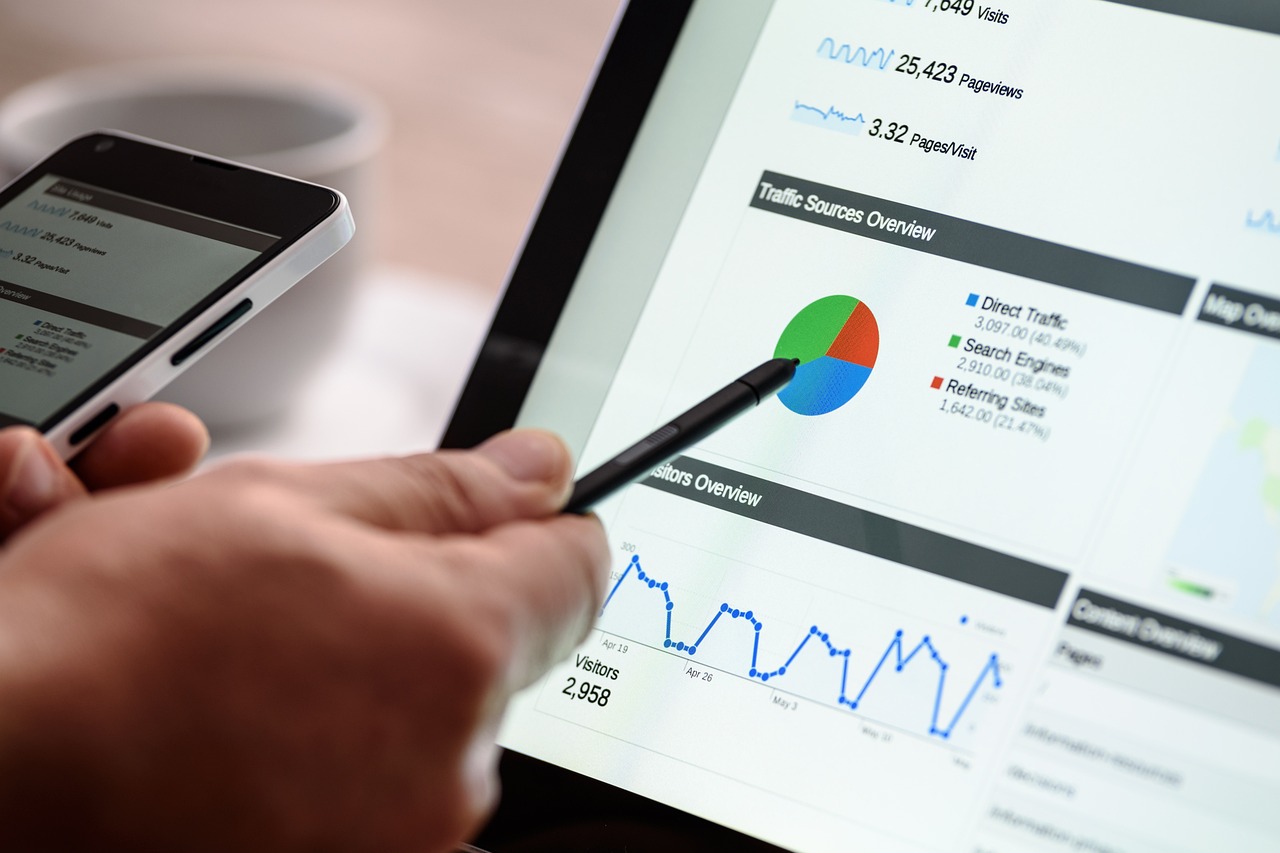
Understanding RSI and MACD
The Relative Strength Index (RSI) and Moving Average Convergence Divergence (MACD) are two of the most powerful tools in a trader's arsenal. They serve as indicators that help traders gauge market momentum and identify potential reversal points. Let's dive into the nitty-gritty of these indicators, shall we?
The Relative Strength Index (RSI) is a momentum oscillator that measures the speed and change of price movements. It ranges from 0 to 100 and is typically used to identify overbought or oversold conditions in a market. An RSI above 70 often indicates that an asset is overbought, while an RSI below 30 suggests that it is oversold. This makes the RSI a fantastic tool for spotting potential reversal points. Imagine you’re at a party, and the music is blasting. At some point, it becomes too loud, and people start to leave. The RSI helps you identify that moment before the crowd thins out.
On the other hand, the Moving Average Convergence Divergence (MACD) is a trend-following momentum indicator that shows the relationship between two moving averages of an asset's price. It consists of three main components: the MACD line, the signal line, and the histogram. The MACD line is calculated by subtracting the 26-period exponential moving average (EMA) from the 12-period EMA. The signal line is a 9-period EMA of the MACD line. When the MACD line crosses above the signal line, it can be a bullish signal, and when it crosses below, it can indicate a bearish signal. Think of the MACD as your trading compass, guiding you through the ever-changing seas of the market.
| Indicator | Purpose | Key Levels |
|---|---|---|
| RSI | Identifies overbought/oversold conditions | Overbought: >70, Oversold: <30 |
| MACD | Shows relationship between two EMAs | Crossovers indicate potential buy/sell signals |
Both indicators can be used in tandem to enhance your trading strategies. For instance, if the RSI indicates that an asset is oversold and the MACD shows a bullish crossover, it could be a strong signal to enter a long position. Conversely, if the RSI suggests overbought conditions and the MACD shows a bearish crossover, it might be time to consider selling.
In summary, understanding how to effectively use the RSI and MACD can significantly improve your trading decisions. They provide insights into market sentiment and potential price movements, helping you stay ahead of the curve. Just remember, like any tool, they are most effective when used in conjunction with other analysis methods and your personal trading strategy.
- What is the best time frame to use RSI and MACD? The optimal time frame depends on your trading style. Day traders may prefer shorter time frames, while swing traders might use daily charts.
- Can I rely solely on RSI and MACD for trading decisions? While they are powerful indicators, it's essential to use them alongside other analysis methods for a more comprehensive view of the market.
- How often should I check my indicators? This varies by trading strategy. Day traders may check them multiple times a day, while long-term investors might review them weekly or monthly.

Chart Patterns to Include
When diving into the world of technical analysis, understanding chart patterns is akin to learning a new language. These patterns serve as visual cues, helping traders interpret market sentiment and predict future price movements. Just like a detective piecing together clues, recognizing these formations can provide valuable insights into potential market shifts. Here are some of the most significant chart patterns you should consider including in your cheat sheet:
Head and Shoulders: This is one of the most reliable reversal patterns. It typically indicates that a trend is about to change direction. The pattern consists of three peaks: a higher peak (head) between two lower peaks (shoulders). When the price breaks below the neckline, it signals a potential downward trend, giving traders a chance to capitalize on the shift.
Triangles: Triangles can be either continuation or reversal patterns, depending on the market context. They form when the price moves within converging trendlines. There are three main types of triangles:
- Ascending Triangle: Often seen as a bullish pattern, it features a horizontal resistance line and an upward-sloping support line.
- Descending Triangle: This is typically bearish, with a horizontal support line and a downward-sloping resistance line.
- Symmetrical Triangle: This pattern indicates indecision in the market, as both buyers and sellers are in a tug-of-war. The breakout direction can be either bullish or bearish.
Flags and Pennants: These patterns are short-term continuation patterns that occur after a strong price movement. Flags appear as rectangular shapes that slope against the prevailing trend, while pennants resemble small symmetrical triangles that form after a sharp price movement. Both patterns indicate a brief pause before the trend resumes, providing traders with potential entry points.
Incorporating these chart patterns into your cheat sheet not only enhances your analytical skills but also boosts your confidence in making trading decisions. Remember, the key to successful trading lies in practice and experience. The more you familiarize yourself with these patterns, the better equipped you'll be to navigate the markets.
What is the significance of chart patterns in trading? Chart patterns help traders identify potential price movements and market trends, allowing for informed decision-making.
How can I effectively use chart patterns in my trading strategy? By recognizing patterns and understanding their implications, you can anticipate potential market movements and adjust your trading strategy accordingly.
Do all chart patterns guarantee success? No, while chart patterns provide valuable insights, they are not foolproof. It's essential to use them in conjunction with other indicators and analysis methods.

Designing Your Cheat Sheet
When it comes to creating a technical analysis cheat sheet, the design is just as crucial as the content. A well-designed cheat sheet can be your secret weapon, allowing you to quickly reference essential information without getting lost in a sea of data. Think of it like a roadmap for your trading journey. You wouldn’t want to be driving through unfamiliar territory without a clear map, right? The same principle applies here. Let’s dive into some tips that can help you craft a cheat sheet that’s not only functional but also visually appealing.
First off, clarity is key. Your cheat sheet should be easy to read at a glance. Use a clean layout that organizes information logically. Group similar items together, and consider using headings and subheadings to break up sections. This will help you quickly locate the information you need. A table can also be a fantastic way to present data succinctly. For instance, you might create a table that summarizes common indicators alongside their definitions and functions:
| Indicator | Definition | Function |
|---|---|---|
| Moving Average | Averages the price over a specific period | Identifies trends |
| RSI | Measures the speed and change of price movements | Identifies overbought or oversold conditions |
| MACD | Shows the relationship between two moving averages | Indicates potential buy/sell signals |
Next, consider the format of your cheat sheet. Are you more comfortable with a digital format that you can access on your devices, or do you prefer a printed version that you can easily flip through? Each option has its pros and cons. Digital formats allow for easy updates and can include hyperlinks to additional resources, while printed sheets can be more convenient for quick reference during trading sessions. Choose what works best for your trading style.
Another important aspect is the incorporation of visual elements. Colors can be a powerful tool in your cheat sheet. For instance, you could use green for bullish indicators and red for bearish ones. This color coding can help you quickly assess the market conditions at a glance. Additionally, graphs and charts can illustrate trends and patterns effectively, making complex data more digestible. A well-placed graph can often convey information more efficiently than text alone.
Finally, remember that your cheat sheet is a living document. As you gain more experience and your trading strategies evolve, don’t hesitate to update your cheat sheet. Regularly revisiting and revising it will ensure that it remains relevant and useful. Think of it as a garden that needs tending; the more you nurture it, the more it will flourish and serve you in your trading endeavors.
- What should I include in my cheat sheet? Focus on key indicators, chart patterns, and trading signals that you frequently use.
- Is a digital or printed cheat sheet better? It depends on your preference; both formats have their advantages.
- How often should I update my cheat sheet? Regularly, especially after significant changes in market conditions or your trading strategies.

Choosing the Right Format
When it comes to creating your technical analysis cheat sheet, one of the most crucial decisions you'll face is choosing the right format. The format you select can significantly impact your ability to quickly reference information during trading sessions. Think of it as picking the right tools for a job; the better the tools, the smoother the process. You have two primary options: digital and printed formats, each with its own set of advantages and drawbacks.
Digital formats, such as PDFs or interactive spreadsheets, offer unparalleled accessibility. You can easily update them, incorporate hyperlinks to online resources, and even use software that allows for real-time data integration. Imagine having your cheat sheet on your tablet or smartphone, allowing you to access it wherever you are—whether you're at home, in a café, or on the trading floor. The convenience of digital formats cannot be overstated, especially for traders who are always on the go.
On the other hand, printed formats have their own charm. There’s something tactile about having a physical sheet in front of you, which can make the information feel more tangible. Plus, you can easily annotate it with notes or highlight sections that you find particularly important. Some traders find that writing things down helps them remember concepts better, almost like a mental shortcut. However, keep in mind that printed sheets can become outdated more quickly, requiring you to print new copies regularly.
Ultimately, the choice between digital and printed formats comes down to your personal preference and trading style. Here are some factors to consider when making your decision:
- Accessibility: How often will you need to reference your cheat sheet? If you're frequently on the move, a digital format may serve you better.
- Updating Needs: Are you planning to make regular updates based on new strategies or market conditions? Digital formats allow for quick revisions.
- Personal Learning Style: Do you retain information better when you write it down? A printed format might be more effective for you.
- Storage and Organization: Consider how you will store your cheat sheet. Digital formats can be organized into folders and easily searched, while printed sheets need physical space.
Once you’ve decided on a format, think about how to structure your cheat sheet for maximum usability. A well-organized cheat sheet will have clear headings, bullet points for quick reference, and logical flow. You might also want to consider creating a table to summarize key indicators or patterns, making it easier to scan through the information at a glance. For example:
| Indicator | Purpose | Timeframe |
|---|---|---|
| Moving Averages | Identify trend direction | Short-term and long-term |
| RSI | Measure overbought/oversold conditions | Best for short-term trades |
| MACD | Spot momentum shifts | Effective in various timeframes |
In conclusion, choosing the right format for your technical analysis cheat sheet is a personal decision that should align with your trading habits and preferences. Whether you opt for a digital or printed version, make sure it’s organized, easily accessible, and tailored to your needs. This cheat sheet will become a powerful tool in your trading arsenal, helping you make informed decisions with confidence.

Incorporating Visual Elements
When it comes to creating a technical analysis cheat sheet, visual elements are not just an afterthought; they are a vital component that can significantly enhance your understanding and quick reference during trading sessions. Imagine trying to navigate a complex map without any clear landmarks or signs—frustrating, right? The same goes for your cheat sheet. By incorporating visual aids, you can transform a sea of numbers and jargon into a clear, digestible format that makes your trading decisions much easier.
One of the most effective ways to incorporate visual elements is through color coding. By using different colors for various indicators or signals, you can quickly identify critical information at a glance. For instance, you might use green for bullish signals, red for bearish signals, and yellow for neutral indicators. This simple technique not only improves readability but also helps in making quick decisions under pressure. Consider a scenario where you’re analyzing multiple charts during a trading session; having a color-coded cheat sheet allows you to spot trends and reversals faster than ever.
Another essential visual element to consider is the use of charts and graphs. These tools can represent data trends over time, making it easier to visualize price movements and understand market sentiment. For example, you can include line charts to show moving averages or bar charts to display volume changes. Here’s a simple table to illustrate how you might organize your visual elements:
| Visual Element | Purpose | Example |
|---|---|---|
| Color Coding | Quick identification of signals | Green for buy, Red for sell |
| Charts | Visual representation of data | Line charts for moving averages |
| Graphs | Trend analysis over time | Bar charts for volume |
Additionally, don’t underestimate the power of icons and symbols. Using recognizable icons can help you quickly associate specific actions or indicators without having to read through text. For instance, a small upward arrow could represent a bullish trend, while a downward arrow could indicate a bearish outlook. This visual shorthand can save you precious seconds during trading when every moment counts.
Lastly, ensure that your cheat sheet is not cluttered. An overload of visual elements can be just as detrimental as a lack of them. Aim for a clean and organized layout where each visual element serves a clear purpose. Think of it like decorating a room; too many decorations can make it feel chaotic, while the right amount creates a harmonious environment. Balance is key!
In summary, incorporating visual elements into your technical analysis cheat sheet not only makes it more appealing but also enhances its functionality. By utilizing color coding, charts, icons, and maintaining a clean layout, you can create a cheat sheet that serves as a powerful tool in your trading arsenal. So, why not take the time to invest in these visual strategies? Your future trading self will thank you!
- What is the purpose of a technical analysis cheat sheet? A technical analysis cheat sheet serves as a quick reference guide for traders to make informed decisions based on market trends and indicators.
- How often should I update my cheat sheet? Regular updates are crucial to reflect changes in market conditions, trading strategies, and personal insights gained from your trading experiences.
- Can I use digital tools to create my cheat sheet? Absolutely! Digital tools can enhance accessibility and allow for easy updates, making them a great option for many traders.

Updating Your Cheat Sheet
When it comes to trading, the only constant is change. Market conditions fluctuate, trends evolve, and new insights emerge. This is why updating your technical analysis cheat sheet is not just a good idea; it's essential for staying ahead of the game. Think of your cheat sheet as a living document—something that grows and adapts with your trading journey. If you neglect to keep it current, you might as well be using a map from a bygone era to navigate a bustling city. It just won’t cut it!
So, how often should you update your cheat sheet? The answer isn’t set in stone. However, consider these key moments:
- After significant market events, such as earnings reports or geopolitical developments.
- When you notice a shift in your trading strategy or philosophy.
- Regularly scheduled reviews—perhaps once a week or month—regardless of market conditions.
During these updates, take a moment to reflect on your past trades. What worked? What didn’t? Incorporate these lessons into your cheat sheet. If you find yourself consistently losing on a particular setup, it might be time to tweak your indicators or patterns. Remember, the goal is to create a tool that not only helps you identify opportunities but also evolves with your understanding of the market.
Another important aspect of updating your cheat sheet is to incorporate new tools and indicators that you discover along your trading journey. The world of technical analysis is vast, and there are always new strategies and indicators being developed. For instance, you might come across a new trading signal that has shown promise in your research. Don’t hesitate to add it to your cheat sheet, along with a brief description of how it works and when to use it.
Lastly, consider the visual elements of your cheat sheet. As you update, you might find that certain colors or layouts make information more digestible. Perhaps you’ve discovered that a specific charting tool helps you visualize trends more clearly. Don’t shy away from making these visual adjustments; they can significantly enhance your ability to quickly absorb information during trading sessions.
In summary, keeping your cheat sheet updated is crucial for effective trading. It’s not just about adding new information; it’s about refining your understanding and adapting to the ever-changing market landscape. By regularly reviewing and updating your cheat sheet, you’re not just preparing for the next trade—you’re setting yourself up for long-term success.
Q: How often should I update my cheat sheet?
A: Aim to update your cheat sheet after significant market events, when your trading strategy changes, or at regular intervals like weekly or monthly reviews.
Q: What should I include in my updates?
A: Include new indicators, insights from past trades, and any changes in your trading strategies. Visual elements can also be adjusted for clarity.
Q: Can I use digital tools for my cheat sheet?
A: Absolutely! Digital tools can make it easier to update and organize your cheat sheet. Consider using spreadsheet software or specialized trading platforms.
Frequently Asked Questions
- What is a technical analysis cheat sheet?
A technical analysis cheat sheet is a quick reference guide that summarizes key concepts, indicators, and strategies used in technical analysis. It helps traders make informed decisions by providing essential information at a glance, enhancing their ability to analyze market trends and price movements effectively.
- Why should I create a cheat sheet for technical analysis?
Creating a cheat sheet can significantly streamline your trading process. It allows you to quickly access important indicators and chart patterns without having to sift through textbooks or online resources during live trading. Think of it as your personal trading toolkit, designed to boost your confidence and efficiency in making decisions.
- What key components should I include in my cheat sheet?
Your cheat sheet should include essential components such as common technical indicators (like Moving Averages, RSI, and MACD), chart patterns (like head and shoulders or triangles), and trading signals. Including these elements will provide you with a well-rounded reference that covers the most critical aspects of technical analysis.
- How often should I update my cheat sheet?
It's crucial to regularly update your cheat sheet to reflect changes in market conditions, your evolving trading strategies, and new insights you gain from your experiences. Think of it like tuning a musical instrument; keeping it updated ensures you're always in harmony with the market.
- What format is best for a technical analysis cheat sheet?
The best format for your cheat sheet depends on your personal preference and trading style. You can choose between a digital format, which is easily accessible on devices, or a printed version that you can have on hand during trading sessions. Just ensure that whatever format you choose is easy to read and navigate.
- How can I make my cheat sheet visually appealing?
Incorporating visual elements like color coding, graphs, and charts can significantly enhance the usability of your cheat sheet. Visual aids make it easier to quickly grasp complex information, helping you to make faster decisions while trading. Think of it as a map; the clearer it is, the easier it is to navigate!

